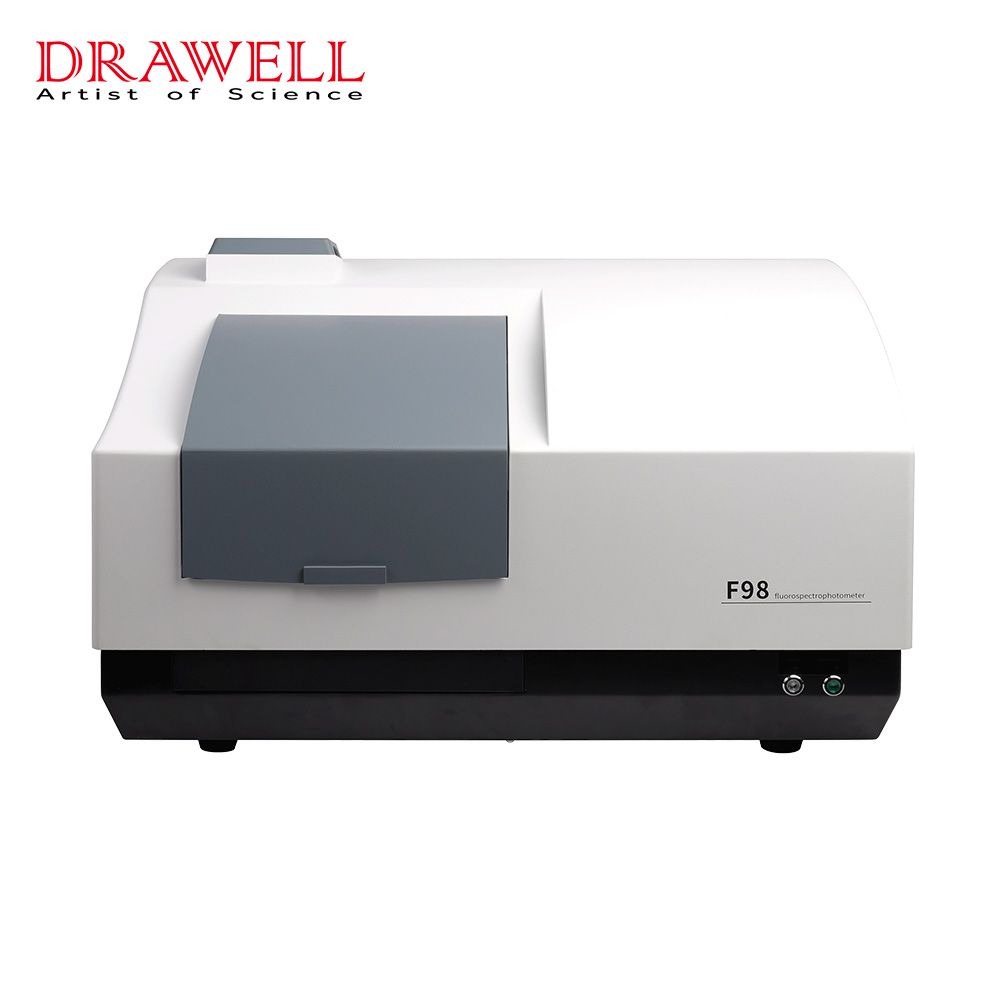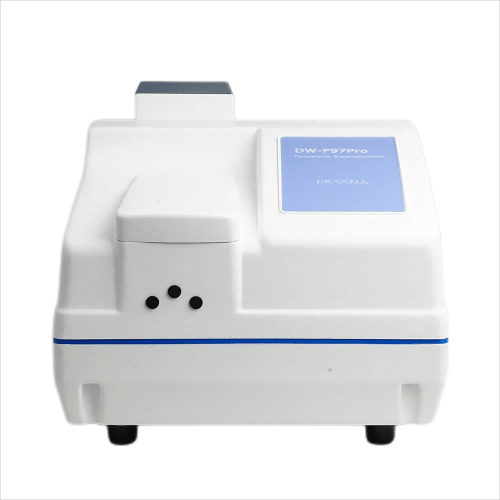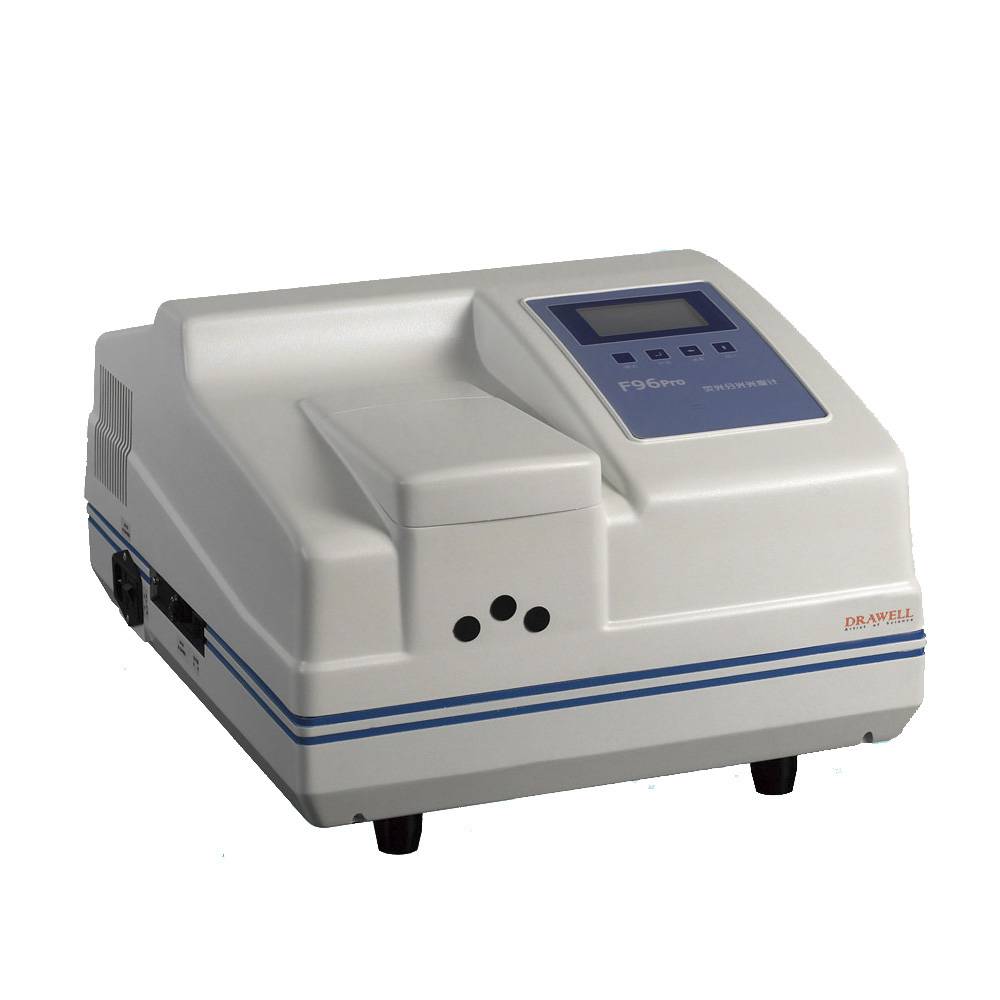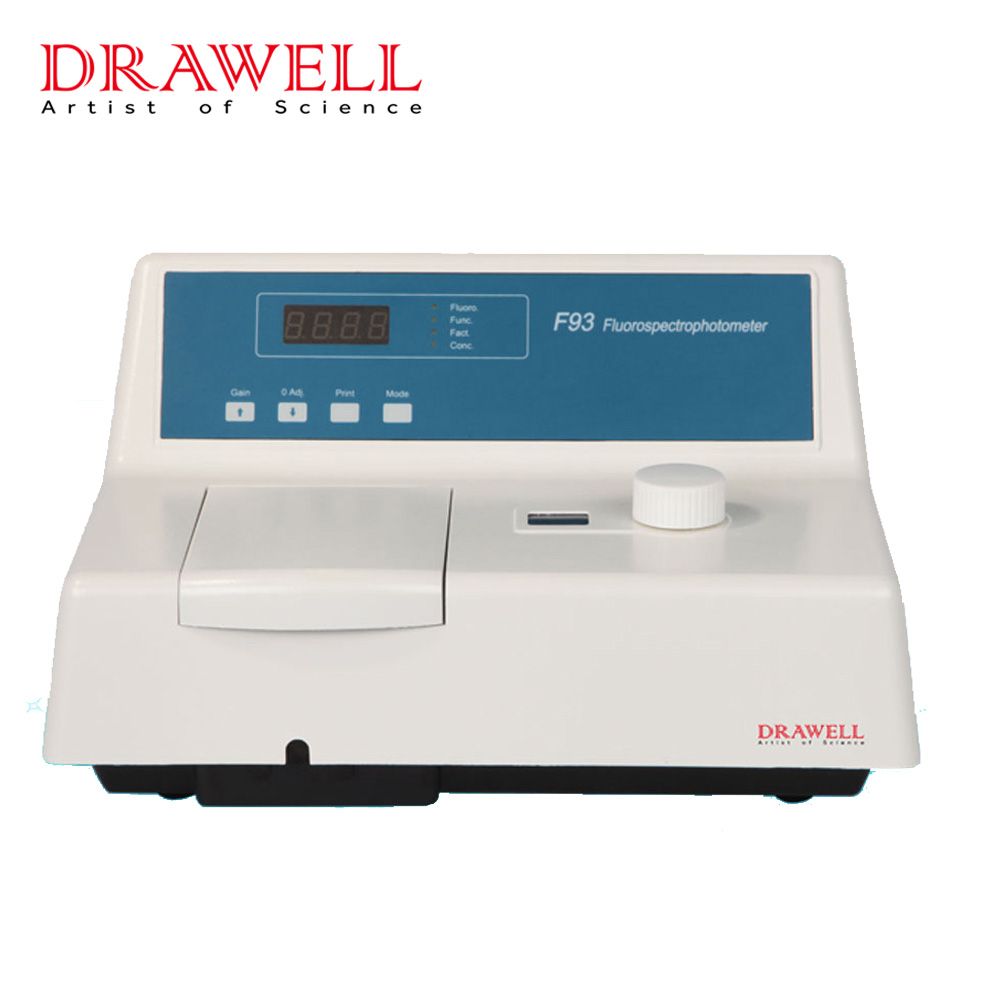The fluorescence spectrometer is mainly used to test information on the excitation spectrum, emission spectrum, quantum yield, fluorescence lifetime, and three-dimensional fluorescence of substances. Other properties such as phosphorescence, up-conversion luminescence, variable temperature spectrum, fluorescence polarization, and laser-induced fluorescence can also be used Detection and analysis can be carried out by configuring appropriate accessories. Fluorescence is a phenomenon of luminescence in which a substance is photoluminescent.
The picture below is a photo of the fluorescent sample under the uv365 lamp:
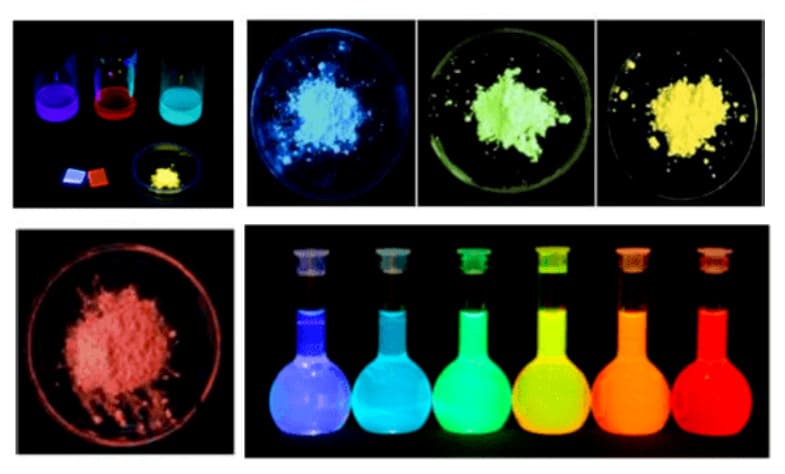
What is fluorescence?
To understand the fluorescence spectrum, you must first know fluorescence. Fluorescence is the excitation of substances after absorbing electromagnetic radiation, and the excited atoms or molecules emit radiation with the same or different wavelengths as the excitation radiation during the de-excitation process. When the excitation light source stops irradiating the sample, the re-emission process stops immediately, and this re-emitted light is called fluorescence.
If the above conditions are met, it is fluorescence. Therefore, the fluorescence range is relatively wide, and it is still fluorescence from the X-ray to the infrared spectral region.
Other energies such as (chemical reactions, heating, biological metabolism, etc.) also have fluorescence, and many phenomena in life are related to fluorescence such as banknote anti-counterfeiting, fluorescent tubes, and firefly light.
Absorption of photons excites the molecule to one of several vibrational energy levels of the first excited state S1, the electron spin is conserved, and S0 and S1 always belong to the singlet state. The electrons in the excited state S1 are first reduced to the lowest vibration energy level of the excited state through vibrational relaxation (VR), and then return to the ground state S0 by emitting photons, and fluorescence will occur.
Because both states have the same spin singlet, the decay of the S1 state to S0 is an allowed transition in the realm of quantum mechanical theory, leading to instantaneous photoluminescence that occurs on picosecond to nanosecond timescales. That is fluorescence [3]. Fluorescence decays rapidly once the excitation source is removed.
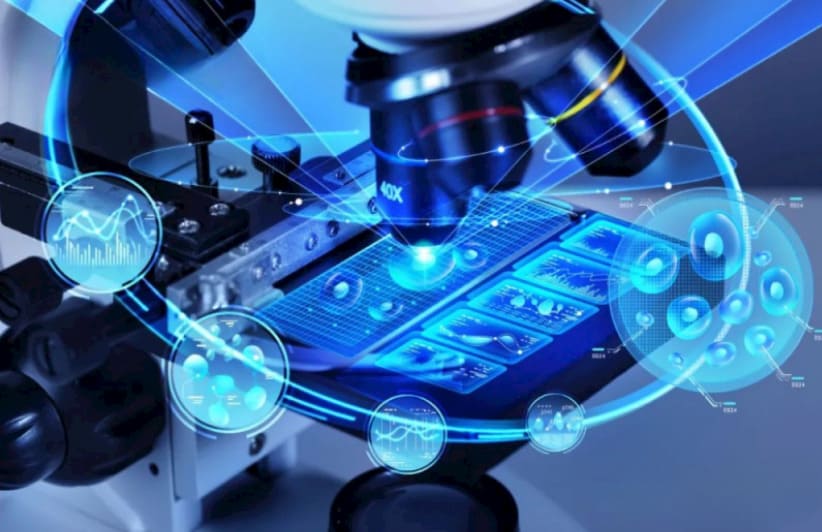
There are two types of fluorescence spectra: transient fluorescence spectrometers and steady-state fluorescence spectrometers. Usually, fluorescence spectrum refers to the steady-state fluorescence spectrum. The fluorescence spectrum includes the excitation spectrum and emission spectrum. The excitation spectrum is the change of the fluorescence intensity at a certain wavelength measured by the fluorescent substance under the excitation light of different wavelengths.
That is the relative efficiency of the excitation light of different wavelengths. The emission spectrum is the excitation light effect of a fixed wavelength. The distribution of the fluorescence intensity is at different wavelengths. That is the phase intensity of the light components of different wavelengths in the fluorescence.
Fluorescence Spectrometer
Conventional fluorescence spectrometers are mainly used to test information on the excitation spectrum, emission spectrum, quantum yield, fluorescence lifetime, and three-dimensional fluorescence of substances, and other properties such as phosphorescence, up-conversion luminescence, variable temperature spectrum, fluorescence polarization, and laser-induced fluorescence. It can also be detected and analyzed by configuring appropriate accessories.
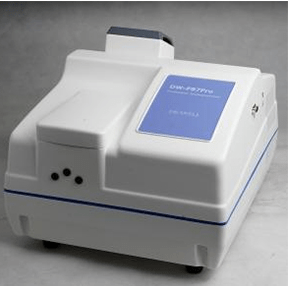
Photoluminescence Excitation Spectra (PLE): Fix the emission wavelength, detect (scan) the luminescence intensity under different excitation wavelength conditions, and obtain the spectrum of the emission intensity of the material (the fixed emission wavelength) changing with the excitation wavelength.
Photoluminescence spectrum (PL): Fix the wavelength of the excitation light, detect (scan) the emission intensity at different emission wavelengths, and obtain the spectrum of the emission intensity of the material as a function of the emission wavelength.
Quantum Yield (QY): Indicates the ability of a substance to fluoresce, with a value between 0 and 1, reflecting the result of competition between fluorescent radiation and other radiative and non-radiative transitions. Specifically, it can be divided into internal quantum yield and external quantum yield.
Fluorescence Lifetime: When the excitation is stopped, the time required for the fluorescence intensity of the molecule drops to 1/e of the maximum intensity during excitation, which represents the average time that the particle exists in the excited state. It is usually called the fluorescence lifetime of the excited state.
Upconversion Fluorescence: Also known as anti-Stokes luminescence, Stokes’ law believes that materials can only be excited by high-energy short-wavelength light, and emit low-energy long-wavelength light, while upconversion luminescent materials Under long-wavelength excitation, light with a wavelength shorter than the excitation wavelength can be continuously emitted.
Temperature Quenching: Due to the influence of different characteristics and thermal stability of luminescent materials, as the temperature rises, the luminous intensity decreases, and the emission spectrum redshifts.
Light sources used on the fluorescence spectrometer can be classified as steady-state light sources and transient light sources. The steady-state light source is generally a xenon lamp with a continuous output of spectrum and energy, which is mainly used for the test of the steady-state spectrum and quantum yield. The transient light source is a pulse output light source with adjustable frequency and specific pulse width, mainly including microsecond lamps, nanosecond lamps, and picosecond pulse lasers, etc., which are mainly used for fluorescence lifetime testing.

